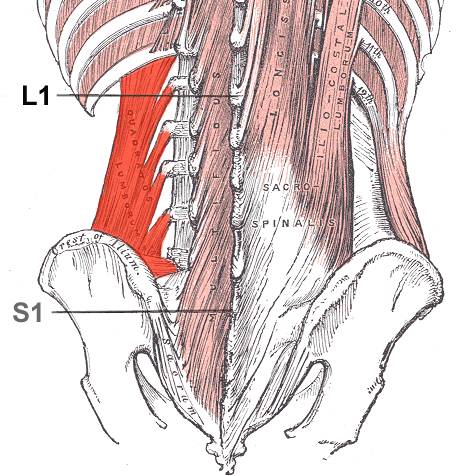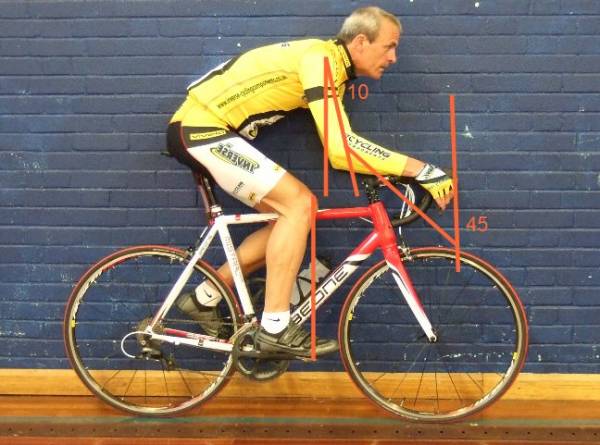Back pain can be one of those things that just ruin your enjoyment of anything. It seems that once a person has experienced back pain, it can frequently recur and a number of responses can be adopted such as:
- Withdrawal from activity (I cant do that because I have a weak back)
- Putting up with additional suffering (I have a bad back)
- Doing something about it (resolving posture and strength issues)
A paper published in 2004 reported that over 70% of the population are likely to experience back pain at some time in their life. Although exercise is recommended as a preventative measure, I do find as a coach that some people experience back pain while cycling.
How Can Cycling Put the Back at Risk?
Cycling is often thought of as a leg-based exercise. While the primary moving joints are the hips, knees, and ankles – driven by the prime movers of quadriceps, gluteals, and calves – the upper body is also engaged. There is a pulling motion on the same side arm as the descending leg. The ascending leg requires engagement of the hip flexor muscles to reduce the downward force on the ascending pedal. One of these hip flexor muscles (psoas major – pictured to the right) is actually connected to the lumbar spine.
In order to stabilize the hips, the obliques and quadratus lumborum on the side of the ascending leg need to engage to reduce hip tilting and stabilize the lower back. If you see a person cycling with hips tilting from side to side, or maybe just one side, it’s likely that these muscles are not engaging fully or have become fatigued. You can test the lower back engagement on the ascending leg side yourself by placing a hand there as you repeat lifting one leg.

quadratus lumborum
The prime movers in the legs are very strong and have great endurance. When the obliques and quadratus lumborum are unable to keep up and start to fatigue, the smaller core muscles start to take the strain. If this situation continues, a muscle strain can occur, along with the resulting discomfort.
What Can You Do?
The first thing is to ensure that your bike fits you properly and is set up for your current range of motion. Setting up your bike in an elite cyclist’s race position may be unnatural and put you at the limit of a range of motion where an imbalance can occur. If your cycle position is uncomfortable to start with, it will only become worse after a few hours cycling and all the enjoyment and initial enthusiasm will gradually disappear.
If you are trying out a new cycle, thirty seconds in the shop is not enough. Try to negotiate a longer session on the cycle or agree that it can be brought back after a while for adjustment and correct fitting.
As an approximate guide, your cycle should be set up as follows. After this it is worth spending some time to tweak the position to fit your actual ranges of motion and limb lengths. You will find that your flexibility and strengths change from year to year and so it is worth reviewing this annually.
Seat height: Adjust the height of the saddle to that with the heel of the foot is just resting on the pedal in the fully down position. You should find that when the ball of the foot is on the centere of the pedal, the knee is slightly flexed.
Seat forwards-backwards position: With the ball of the foot resting on the center of the front pedal, with pedals horizontal, check that the kneecap is vertically over the pedal spindle. You may need to re-adjust the height after this.
Foot position: The ball of the foot should be over the center of the pedal spindle and the foot aligned with the direction of the cycle.
Saddle angle: This is usually horizontal and can be checked with a spirit level.
Saddle-handlebar distance: This can be variable depending upon posture and abilities. A good place to start is with the hands on the lowest part of the handlebars, the upper arm should be about 10 degrees from vertical, and the forearms about 45 degrees from horizontal.
Handlebar height: This is usually a personal preference and is typically between zero and 10 cm below the seat height. Someone who is less flexible and new to cycling may prefer zero and a frequent racer may be as much as 10cm. If you find back pain is a problem, raising the bars slightly may be more comfortable.
Handlebar width: This is normally set to the width of the shoulders, measured by the distance between the small bumps (acromion process) on top of the shoulders.

The picture shows a profile of a cyclist with some of these measurements marked. The upper arm is approximately 10 degrees from vertical. If the cyclist were holding the drop bars, the forearm would be at about 45 degrees. The knee is actually in front of the pedal spindle and the individual may benefit from moving the saddle backwards slightly.
What Else Can You Do?
Have someone observe how you move while cycling. Do your knees move out or hips tilt or body sway to one side? The lumbar spine is at the crossroads of the upper and lower body and quite often it has to compensate for poor or unsynchronised movements in other parts of the body.
If finding an observer cannot be found, try setting up a video camera on a tripod and reviewing it afterwards. Another popular option is to set up a cycle in front of a mirror. Some cycle fitting facilities will also video your movements as part of the fitting process. If you have an acute back pain, always seek the advice of a qualified professional.
Keep an eye out for future articles where I will be covering some great exercises to help strengthen the lower back for cyclists.
References:
1. Kim Burton et al., European guidelines for prevention in low back pain. November 2004., accessed 2 July, 2013
2. Association of British Cycling Coaches., Coaching Manual, 2010.
Photo 1 by Henry Vandyke Carterderivative work: Icewalker cs (Gray430.png) [Public domain], via Wikimedia Commons
Photo 2 modified by Uwe Gille (Gray Image:Gray389.png) [Public domain], via Wikimedia Commons






